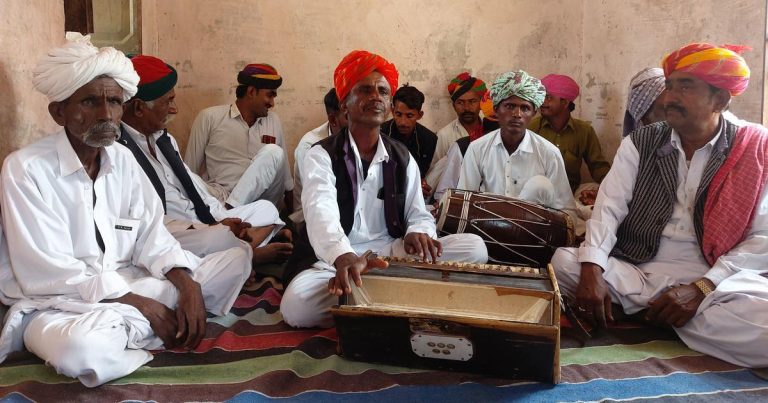From village squares to urban stages, traditional music and dance are drawing fresh audiences and fresh investment, propelled by digital platforms, diaspora communities and a post-pandemic surge in live events. What was once coded as heritage is increasingly a living economy: ensembles selling out tours, folk repertoires trending on short-form video, and community troupes negotiating streaming rights alongside costume repairs.
At stake is more than nostalgia. Governments are expanding cultural diplomacy, tourism boards are rebranding destinations around heritage festivals, and local custodians are pushing to safeguard rituals as intellectual property. At the same time, commercialization, climate pressures and conflict are reshaping who performs, who profits and what survives. UNESCO lists grow, but so do debates over appropriation, funding cuts and the risk that algorithms flatten regional nuance into viral spectacle.
follows the money, the movement and the meaning across continents, from rehearsal rooms and remote archives to street parades and stadiums. It asks how centuries-old forms are adapting to new markets, how young artists are redefining authenticity, and whether a global audience can sustain the roots as well as the rhythm.
Table of Contents
- Mapping endangered rhythms from Sahel to the Steppe with digital archives, open licensing and community consent
- Sustaining traditions on the ground funding strategies, school curricula, fair pay standards and local leadership
- Taking culture to global stages ethical touring, transparent credits, profit sharing and respectful fusion
- Insights and Conclusions
Mapping endangered rhythms from Sahel to the Steppe with digital archives, open licensing and community consent
From the Sahel’s desert ceremonies to steppe horse-fiddle traditions, cultural teams are racing to document vulnerable beats and dances in open, searchable repositories, coupling high-fidelity field recordings with community-authored context and selectively applied Creative Commons licenses; the model prioritizes free, prior and informed consent, geospatial mapping of at-risk repertoires, and low-bandwidth access tools to reach villages and diasporas alike, while avoiding extractive practices by ensuring local custodians set terms for visibility, reuse and benefit-sharing.
- Community-led rights: FPIC workflows, recorded consent statements, and local advisory councils guide what is shared and what remains restricted.
- Open licensing: Tailored use of CC BY, CC BY-SA or CC BY-NC, with clear attribution lines and machine-readable rights metadata.
- Preservation-at-source: Rugged digitization kits, training for youth archivists, and mirrored backups in regional hubs.
- Context-rich metadata: Native language tags, performer lineage, instrument taxonomy, dance steps, and ceremonial purpose embedded for discovery.
- Access equity: Low-data audio, subtitle-ready video, offline archive packs, and SMS links for areas with intermittent connectivity.
- Benefit pathways: Micro-licensing for broadcasters, revenue splits to collectives, and attribution tracking for academic reuse.
- Cultural safeguards: Seasonal embargoes, sensitive content flags, and location-blurring to protect communities and sacred sites.
Sustaining traditions on the ground funding strategies, school curricula, fair pay standards and local leadership
From municipal halls to village squares, cultural organizations are moving beyond ad‑hoc festivals to build durable systems: hybrid financing blends microgrants with venue surcharges and diaspora contributions; schools are embedding repertoire, language, and instrument maintenance into timetables; pay frameworks align fees with hours of rehearsal and travel; and program boards now reserve seats for tradition-bearers and youth. Observers note that transparency is shifting outcomes as budgets, rate cards, and curricula are published in local languages, and performance metrics track not only audience counts but artisan livelihoods and student retention. The emerging consensus is clear: predictability for artists, continuity for learners, and authority for communities are the pillars turning preservation into policy.
- Funding: blended public-private grants; ticket or nightlife levies; cooperative venue ownership; diaspora bonds.
- School curricula: co-teaching with masters; credential pathways; instrument libraries; locally governed digital archives.
- Fair pay standards: minimum fees and per diems; rehearsal/time-based rates; pension and insurance contributions; standard contracts.
- Local leadership: elected cultural councils; youth apprenticeships; women-led committees; data sovereignty agreements.
Taking culture to global stages ethical touring, transparent credits, profit sharing and respectful fusion
As folk ensembles and roots bands cross borders, presenters report a pivot from token showcases to rights-centered itineraries: contracts peg fees to local wage indices, outline visa sponsorship and health coverage, and require carbon reporting for long-haul routes; organizers seek documented consent from tradition-bearer councils before stage adaptations; and tech riders allocate time for on-stage attribution in native languages. Rights data now travels with the work: split sheets list elders, choreographers, and instrument makers; PRO registrations and ISWC/ISRC codes mirror those credits; and settlements disclose revenue waterfalls, with community trusts receiving points alongside star soloists. Producers say hybrids land best when collaboration starts at source-co-writing in village studios, recoup caps on derivative merch, and veto power over sampling. The emerging standard is clear: audiences get spectacle; originators retain agency, credit, and pay.
- Ethical touring: fees indexed to local living costs, visas and insurance underwritten by promoters, flexible routing to respect sacred days, and low-impact logistics.
- Transparent credits: on-screen supertitles, QR-linked liner notes with genealogies, open metadata (DDEX) and verifiable attestations to anchor authorship.
- Profit sharing: predefined recoup ceilings, net-vs-gross clarity in contracts, micro-royalties to community archives, and timely, auditable settlements.
- Respectful fusion: cultural dramaturgs on teams, no-go motifs flagged by custodians, language coaches for accurate pronunciation, and residency time baked into schedules.
Insights and Conclusions
As traditional music and dance move from village squares to global stages, the debate is shifting from preservation to participation: who gets to define authenticity, who benefits from new audiences, and how communities retain control. Digital platforms and cross-border collaborations are broadening reach, even as they raise fresh questions about attribution, revenue, and cultural context.
With festivals recalibrating lineups, museums rethinking curation, and schools expanding arts curricula, the next phase will test whether revival can remain rooted. The outcome may hinge on equitable funding, transparent licensing, and community-led archiving as much as on virtuosity. For now, the pulse persists-loud, mobile, and increasingly networked-its future shaped as much by local custodians as by the global circuits that carry their sound.


